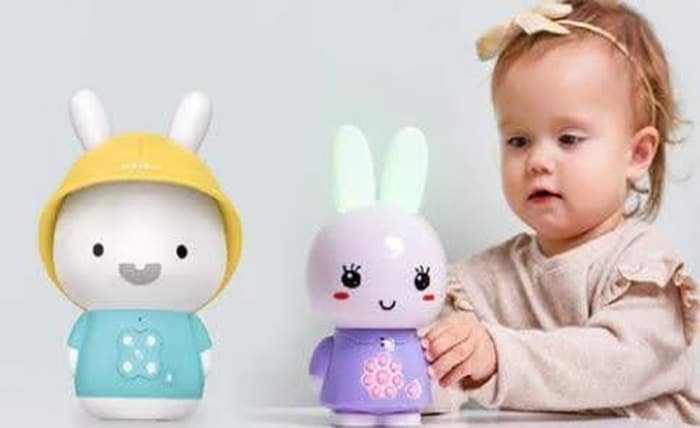Introducing toys to your baby is an important milestone in their development. Toys aren’t just for fun; they play a crucial role in helping your baby learn about the world. The right toy at the right time can stimulate your baby’s senses, enhance their motor skills, and encourage cognitive development. But when do babies start playing with toys? This guide will help you understand the best age to introduce various types of toys and what kinds of toys are suitable for different stages of your baby’s growth.
Why Age Matters When Choosing Toys for Your Baby
Choosing the right toys at the right time supports your baby’s development and avoids overstimulation. Babies go through various developmental stages, and the toys they interact with play a crucial role in their growth.
Understanding Developmental Milestones
Developmental milestones are key indicators of your baby’s growth. From birth to 12 months, babies go through several stages where specific types of toys can aid their development. Understanding these milestones helps in selecting appropriate toys that match your baby’s needs. For instance, newborns benefit from sensory stimulation while older babies thrive on interactive and complex toys.
The Risks of Giving Toys Too Early or Too Late
Providing toys too early can overwhelm a baby and pose safety risks, such as choking hazards. Conversely, introducing toys too late can slow down key developmental processes like hand-eye coordination and cognitive skills. Striking a balance is essential to ensure your baby’s playtime is both safe and enriching, supporting healthy growth at the right developmental stage.
What Are the Best Toys for Newborns to 3 Months?
In the first few months, your baby’s brain and senses are rapidly developing. The right toys can help them start to engage with their environment and build foundational skills.
Sensory Toys for Newborns
Newborns are still adjusting to life outside the womb. Soft, lightweight rattles, high-contrast black-and-white cards, and cloth activity books with bold patterns attract their limited vision and help enhance sensory skills. These toys provide excellent visual and auditory stimulation, even if newborns are not actively “playing” yet, fostering early development and sensory exploration.
Toys That Promote Grasping and Reaching
In the first three months, babies begin making random movements and may accidentally swat at toys. Offering soft plush toys without small parts and play gyms with hanging objects encourages grasping and reaching. These activities help promote the development of hand-eye coordination, a key milestone in your baby’s early physical development.
When Should You Introduce Interactive Toys for Babies?
At around 3 to 6 months, your baby’s motor and cognitive skills are developing rapidly, and they are ready for toys that promote interaction.
Understanding Cause-and-Effect Play
Around 3 to 6 months, babies start observing the effects of their actions. Toys that make noise when touched or squeaked, like rattles and soft teething toys, teach them cause and effect. This stage is crucial for developing cognitive skills and understanding interaction, helping babies connect their actions with results and fostering early learning.
Best Interactive Toys for Babies 3-6 Months
Choose interactive toys that are easy to grasp and make sounds, such as rattles with different shapes and textures, activity mats, and colorful blocks. These toys stimulate your baby’s senses, promoting cognitive development and improving motor skills. They also keep your baby engaged and entertained, supporting both learning and play during critical developmental stages.
Toys for 6 to 12-Month-Old Babies: Enhancing Development
From 6 to 12 months, your baby’s curiosity and skills grow. This is the perfect time to introduce toys that challenge them to think, problem-solve, and develop fine motor skills.
Cognitive Development with Stacking Blocks
At 6 to 12 months, babies start enjoying more complex activities like stacking and sorting. Simple stacking blocks or toys with various shapes promote problem-solving and cognitive development. These activities also enhance fine motor skills and hand-eye coordination, helping babies refine their ability to manipulate objects and understand spatial relationships.
Promoting Hand-Eye Coordination
Babies at this stage love to explore their surroundings. Toys like rings, cups, and shapes that can be grasped, manipulated, and stacked promote hand-eye coordination and motor skills. Interactive books and toys with movable parts also motivate babies to use their hands in new ways, teaching them to control their movements.
Conclusion
Selecting the correct toys at the right stages enriches your baby’s development journey. From sensory stimulation during the newborn phase to interactive play later on, toys are vital for learning and growth. Prioritize safety and choose engaging, non-overwhelming toys. Create an environment that stimulates sensory exploration, supports motor development, and encourages early learning, ensuring your baby’s overall well-being. Your involvement in playtime greatly enhances their milestones and makes the experience more beneficial. Let toys be the stars in your baby’s discovery.

